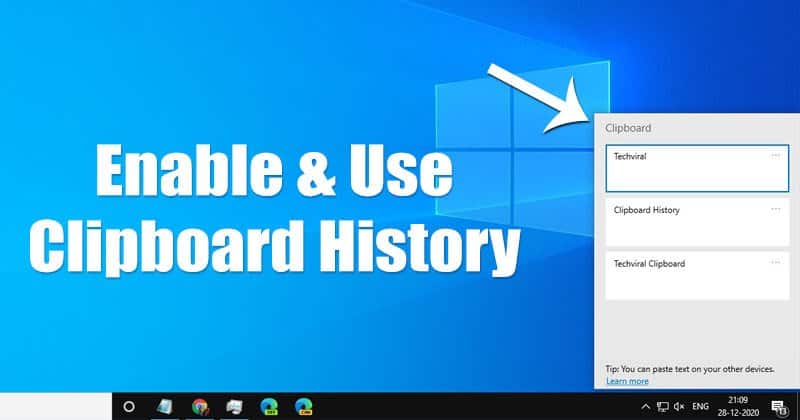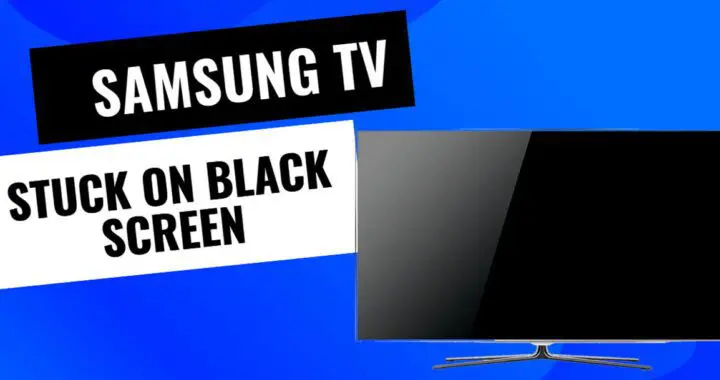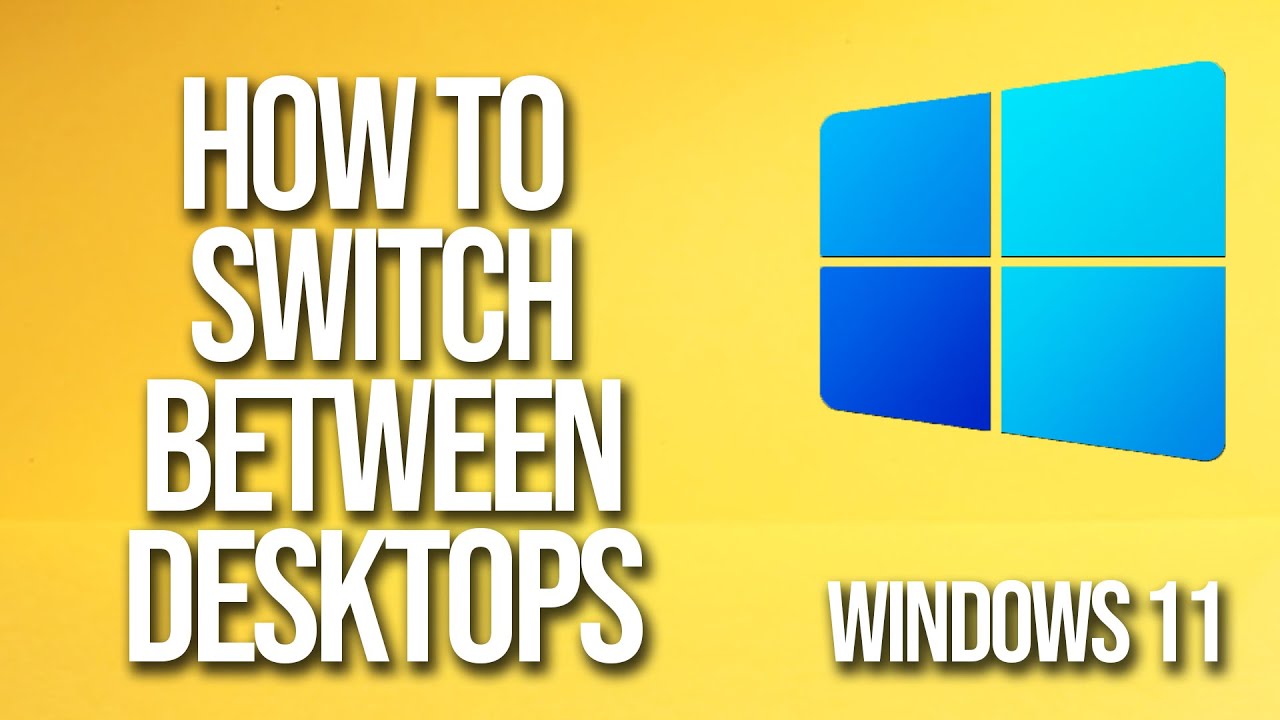Have you ever found yourself needing to paste multiple items, only to realize Windows’ traditional clipboard only remembers the last thing you copied? That frustrating moment of constantly switching back and forth to copy-paste is a thing of the past thanks to Clipboard History in Windows. This incredibly useful feature, introduced in Windows 10 (version 1809 and later) and available in Windows 11, allows you to access a list of recently copied text and images. This guide will show you how to enable it and master its use, revolutionizing your workflow.
What is Clipboard History?
Traditional Windows clipboard functionality allows you to copy one item (text or image) at a time. When you copy something new, the previous item is overwritten. Clipboard History changes this by storing up to 25 of your most recent copied items. This means you can copy several pieces of text or images in a row and then choose which one to paste later, without having to re-copy. It’s a massive time-saver for anyone who deals with a lot of copy-pasting, from coding to writing emails.
How to Enable Clipboard History
Clipboard History isn’t enabled by default on all Windows installations, but turning it on is a quick process.
Step 1: Open Windows Settings
There are a few ways to open Settings:
- Start Menu: Click the Start button and then click the Settings gear icon.
- Keyboard Shortcut: Press Windows Key + I simultaneously.
Step 2: Navigate to Clipboard Settings
- In the Settings window, click on “System.”
- In the left-hand menu, scroll down and click on “Clipboard.”
Step 3: Toggle On Clipboard History
- Under the “Clipboard” section, you’ll see a toggle switch labeled “Clipboard history.”
- Click this toggle to turn it “On.”
Once the toggle is on, Clipboard History is enabled, and Windows will start saving everything you copy.
How to Use Clipboard History
Enabling the feature is only half the battle. Knowing how to access and utilize your clipboard history is where the real magic happens.
Accessing the Clipboard History Panel:
- Whenever you want to paste an item from your history, instead of pressing Ctrl + V (the standard paste command), press Windows Key + V.
- A small pop-up panel will appear, displaying a list of your recently copied items. These will be shown in chronological order, with the most recently copied item at the top.
Pasting an Item from History:
- From the Clipboard History panel (opened with Windows Key + V), simply click on the item you wish to paste.
- The selected item will be immediately pasted into your current application.
Pinning Items in Clipboard History:
Sometimes you copy items that you’ll need to use repeatedly throughout your session or even across reboots. Clipboard History allows you to “pin” these items so they aren’t removed from the history, even if you clear it or restart your computer.
- Open the Clipboard History panel (Windows Key + V).
- Hover your mouse over the item you want to pin.
- Click the pin icon (it looks like a thumbtack) that appears next to the item.
- Pinned items will remain in your history until you unpin them.
Unpinning Items:
- Open the Clipboard History panel (Windows Key + V).
- Hover over a pinned item.
- Click the unpin icon (the thumbtack again) to unpin it.
Deleting Individual Items from History:
If your clipboard history gets cluttered, or if you’ve copied sensitive information you don’t want stored, you can delete individual entries.
- Open the Clipboard History panel (Windows Key + V).
- Hover over the item you want to delete.
- Click the ellipsis (three dots) button that appears next to the item.
- Select “Delete” from the options.
Clearing All Clipboard History:
To clear all unpinned items from your clipboard history (pinned items will remain), you have two options:
Option 1: From the Clipboard History Panel:
- Open the Clipboard History panel (Windows Key + V).
- Click the “Clear all” button at the top right of the panel.
Option 2: From Settings:
- Go to Settings > System > Clipboard.
- Under “Clear clipboard data,” click the “Clear” button.
Important Note on Clearing: Clearing the history only affects items not pinned. Pinned items are designed to persist.
Synchronizing Clipboard Across Devices (Cloud Sync)
Windows Clipboard History also includes an optional feature to synchronize your clipboard content across your other Windows devices, as long as you’re signed in with the same Microsoft account. This is incredibly useful if you work across a desktop and a laptop.
To Enable Cloud Sync:
- Go to Settings > System > Clipboard.
- Under “Sync across your devices,” toggle the switch to “On.”
- You might be prompted to verify your Microsoft account.
How Cloud Sync Works:
- Once enabled, items you copy on one synced Windows device will be available in the Clipboard History panel on your other synced devices.
- Only text and smaller images will sync. Larger files or complex formats might not sync.
- For security reasons, sensitive information like passwords should be handled with care when cloud sync is enabled. It’s generally not recommended to copy passwords to the clipboard if sync is active.
Troubleshooting Clipboard History
While Clipboard History is reliable, you might encounter minor issues.
- Clipboard History Not Showing Up:
- Check Enablement: Double-check that “Clipboard history” is toggled “On” in Settings.
- Windows Version: Ensure you are running Windows 10 version 1809 or newer, or Windows 11.
- Restart Explorer: Sometimes, restarting Windows Explorer can resolve minor glitches. Open Task Manager (Ctrl + Shift + Esc), find “Windows Explorer” in the Processes tab, right-click, and select “Restart.”
- Items Not Sticking in History:
- Limit Reached: Remember the 25-item limit for unpinned items.
- Restarted PC: Unpinned items are cleared on reboot. Pin important items.
- Sync Not Working:
- Microsoft Account: Ensure you’re signed in with the same Microsoft account on all devices.
- Sync Toggle: Verify “Sync across your devices” is enabled on all relevant devices.
- Network Connection: Ensure both devices have an active internet connection.
Conclusion
The Clipboard History feature in Windows is a small but mighty enhancement that significantly improves productivity. By enabling it and understanding how to use its various functions – from simple pasting to pinning and syncing – you can streamline your copy-paste workflow and save valuable time. It’s one of those features that once you start using, you’ll wonder how you ever managed without it.
SEO Meta Description: Enable and use Clipboard History in Windows! Learn how to access, paste from, pin items, and even sync your clipboard across devices for enhanced productivity.
How to Enable and Use Clipboard History in Windows
Have you ever found yourself needing to paste multiple items, only to realize Windows’ traditional clipboard only remembers the last thing you copied? That frustrating moment of constantly switching back and forth to copy-paste is a thing of the past thanks to Clipboard History in Windows. This incredibly useful feature, introduced in Windows 10 (version 1809 and later) and available in Windows 11, allows you to access a list of recently copied text and images. This guide will show you how to enable it and master its use, revolutionizing your workflow.
What is Clipboard History?
Traditional Windows clipboard functionality allows you to copy one item (text or image) at a time. When you copy something new, the previous item is overwritten. Clipboard History changes this by storing up to 25 of your most recent copied items. This means you can copy several pieces of text or images in a row and then choose which one to paste later, without having to re-copy. It’s a massive time-saver for anyone who deals with a lot of copy-pasting, from coding to writing emails.
How to Enable Clipboard History
Clipboard History isn’t enabled by default on all Windows installations, but turning it on is a quick process.
Step 1: Open Windows Settings
There are a few ways to open Settings:
- Start Menu: Click the Start button and then click the Settings gear icon.
- Keyboard Shortcut: Press Windows Key + I simultaneously.
Step 2: Navigate to Clipboard Settings
- In the Settings window, click on “System.”
- In the left-hand menu, scroll down and click on “Clipboard.”
Step 3: Toggle On Clipboard History
- Under the “Clipboard” section, you’ll see a toggle switch labeled “Clipboard history.”
- Click this toggle to turn it “On.”
Once the toggle is on, Clipboard History is enabled, and Windows will start saving everything you copy.
How to Use Clipboard History
Enabling the feature is only half the battle. Knowing how to access and utilize your clipboard history is where the real magic happens.
Accessing the Clipboard History Panel:
- Whenever you want to paste an item from your history, instead of pressing Ctrl + V (the standard paste command), press Windows Key + V.
- A small pop-up panel will appear, displaying a list of your recently copied items. These will be shown in chronological order, with the most recently copied item at the top.
Pasting an Item from History:
- From the Clipboard History panel (opened with Windows Key + V), simply click on the item you wish to paste.
- The selected item will be immediately pasted into your current application.
Pinning Items in Clipboard History:
Sometimes you copy items that you’ll need to use repeatedly throughout your session or even across reboots. Clipboard History allows you to “pin” these items so they aren’t removed from the history, even if you clear it or restart your computer.
- Open the Clipboard History panel (Windows Key + V).
- Hover your mouse over the item you want to pin.
- Click the pin icon (it looks like a thumbtack) that appears next to the item.
- Pinned items will remain in your history until you unpin them.
Unpinning Items:
- Open the Clipboard History panel (Windows Key + V).
- Hover over a pinned item.
- Click the unpin icon (the thumbtack again) to unpin it.
Deleting Individual Items from History:
If your clipboard history gets cluttered, or if you’ve copied sensitive information you don’t want stored, you can delete individual entries.
- Open the Clipboard History panel (Windows Key + V).
- Hover over the item you want to delete.
- Click the ellipsis (three dots) button that appears next to the item.
- Select “Delete” from the options.
Clearing All Clipboard History:
To clear all unpinned items from your clipboard history (pinned items will remain), you have two options:
Option 1: From the Clipboard History Panel:
- Open the Clipboard History panel (Windows Key + V).
- Click the “Clear all” button at the top right of the panel.
Option 2: From Settings:
- Go to Settings > System > Clipboard.
- Under “Clear clipboard data,” click the “Clear” button.
Important Note on Clearing: Clearing the history only affects items not pinned. Pinned items are designed to persist.
Synchronizing Clipboard Across Devices (Cloud Sync)
Windows Clipboard History also includes an optional feature to synchronize your clipboard content across your other Windows devices, as long as you’re signed in with the same Microsoft account. This is incredibly useful if you work across a desktop and a laptop.
To Enable Cloud Sync:
- Go to Settings > System > Clipboard.
- Under “Sync across your devices,” toggle the switch to “On.”
- You might be prompted to verify your Microsoft account.
How Cloud Sync Works:
- Once enabled, items you copy on one synced Windows device will be available in the Clipboard History panel on your other synced devices.
- Only text and smaller images will sync. Larger files or complex formats might not sync.
- For security reasons, sensitive information like passwords should be handled with care when cloud sync is enabled. It’s generally not recommended to copy passwords to the clipboard if sync is active.
Troubleshooting Clipboard History
While Clipboard History is reliable, you might encounter minor issues.
- Clipboard History Not Showing Up:
- Check Enablement: Double-check that “Clipboard history” is toggled “On” in Settings.
- Windows Version: Ensure you are running Windows 10 version 1809 or newer, or Windows 11.
- Restart Explorer: Sometimes, restarting Windows Explorer can resolve minor glitches. Open Task Manager (Ctrl + Shift + Esc), find “Windows Explorer” in the Processes tab, right-click, and select “Restart.”
- Items Not Sticking in History:
- Limit Reached: Remember the 25-item limit for unpinned items.
- Restarted PC: Unpinned items are cleared on reboot. Pin important items.
- Sync Not Working:
- Microsoft Account: Ensure you’re signed in with the same Microsoft account on all devices.
- Sync Toggle: Verify “Sync across your devices” is enabled on all relevant devices.
- Network Connection: Ensure both devices have an active internet connection.
Conclusion
The Clipboard History feature in Windows is a small but mighty enhancement that significantly improves productivity. By enabling it and understanding how to use its various functions – from simple pasting to pinning and syncing – you can streamline your copy-paste workflow and save valuable time. It’s one of those features that once you start using, you’ll wonder how you ever managed without it.




